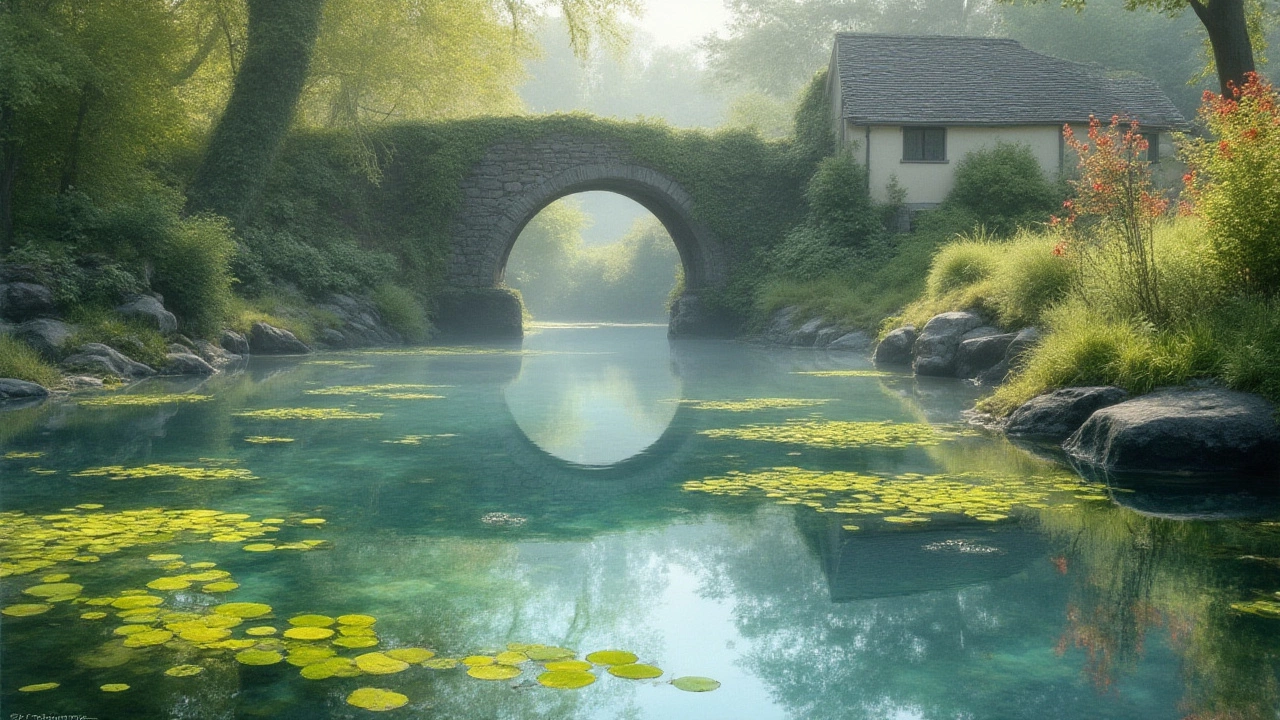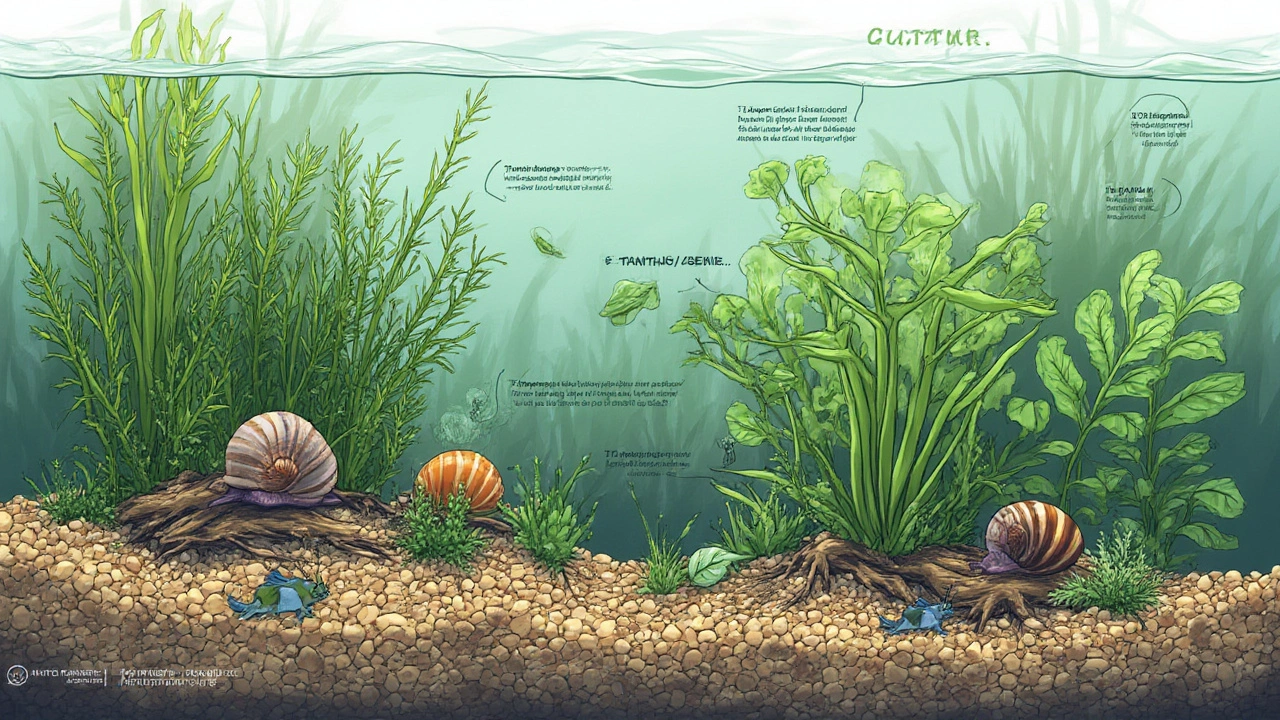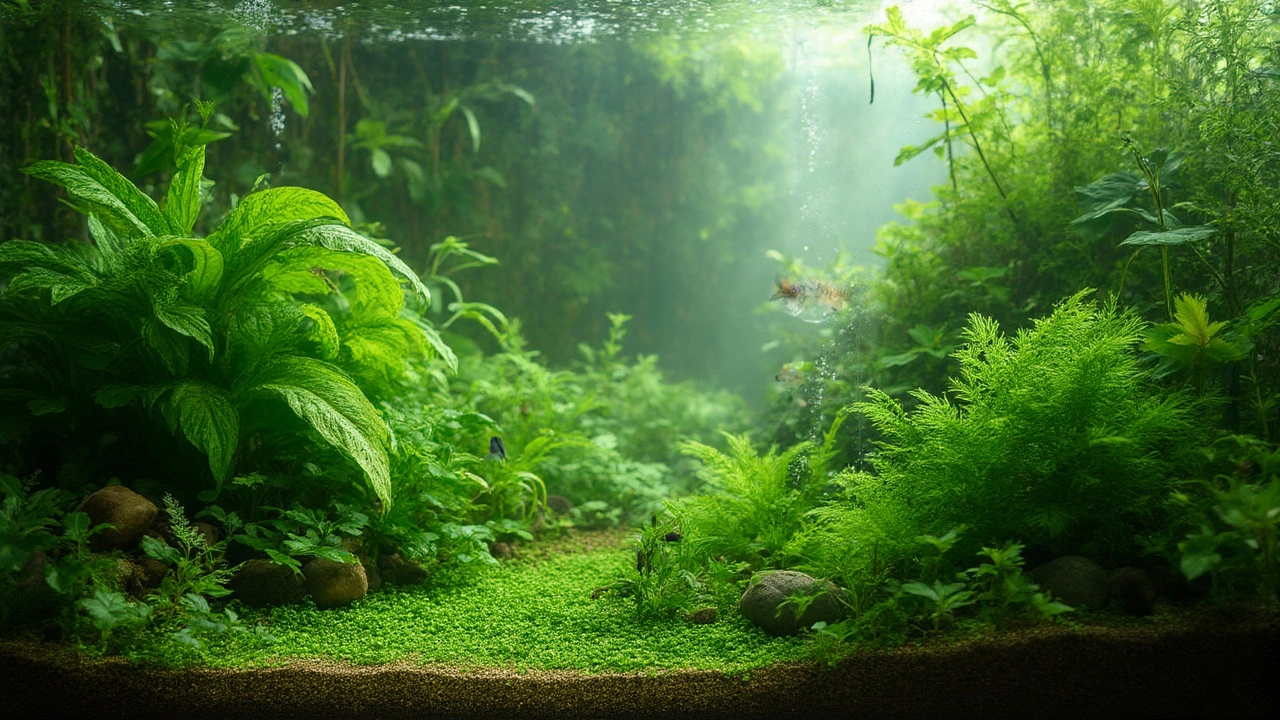Walk past an aquarium or peer into the edge of a clear pond and you’ll spot a wild world that’s nothing like your average flower bed. Under that placid surface, green leaves and tangled stems sway like a slow dance, and some of these plants never peek above water, even once. Folks get curious: Which plants actually can grow completely submerged, living their entire lives underwater? People are used to ferns, roses, and sunflowers, but there’s a whole other set that doesn’t need dirt, rain showers, or sun on their backs. Submerged aquatic plants could be the most hassle-free, yet most misunderstood, plants around. Science geeks, naturalists, and fish tank owners know them well—but what species can you count on to truly thrive underwater?
What Makes a Plant Thrive Fully Submerged
Plants like lilies and lotuses flirt with water—they keep their roots wet but reach their leaves up to the air. Submerged plants, though, spend every moment under the surface. They grab all their light, oxygen, and nutrients straight from their watery world, not from air or soil. Take a stem of hornwort or a rosette of Vallisneria. They don’t drown; they’re made for living wet. Here’s the first secret: submerged plants evolved special adaptations. Instead of tough, waxy leaves like drought-proof plants, they’ve got thin, flexible leaves. Why? Thin leaves make it easier to pull dissolved carbon dioxide and oxygen from the water (which is about 30 times less than air).
So, what actually makes a plant tick underwater? For one, many submerged species lack the rigid support structures you’d see in dry-land plants. Water supports their weight—they don’t have to fight gravity. They’re often light, feathery, or ribbon-like, which helps them sway in currents and lets water (and nutrients) pass over all their surfaces. The roots? For lots of them, roots are practically optional. These plants can sometimes float and grab nutrients straight from the water column through leaves and stems. And these adaptations make them superstars in underwater environments where light might be dim (like at the bottom of a tank or murky pond) and space is cramped.
Of course, not every green thing tossed in the fish tank survives. Most houseplant cuttings rot in days. True aquatic plants—sometimes called macrophytes or hydrophytes—are another story. They’re the backbone of wild underwater habitats and the secret to a healthy, algae-free aquarium at home. According to a real-life mishap I watched happen in my own tank (Cora can vouch for me on this), tossing in a terrestrial plant just makes a slimy mess, while a bunch of hornwort takes off and soaks up the nitrates, keeping the water crystal clear.
Submerged plants don’t just look pretty. They help oxygenate the water, stripping out excess nutrients and providing shelter for everything from baby guppies to breeding frogs. Aquarists sometimes joke that a tank without plants is just a puddle. Fish and inverts are happier—and water is easier to keep stable—with a healthy submerged jungle. The flip side: you have to choose the right plants, or you’ll be fighting a losing battle.
Because these plants are so specialized, they’re sensitive to problems above and below the waterline. Subpar lighting, hard water, too-hot tanks—these can all limit growth or even kill your green denizens. Submerged species quickly melt if the water quality dips or there’s not enough dissolved minerals. So, picking the right species isn’t just about beauty—it’s about fitting the right plant to your own wet world.

Species Spotlight: The Best Plants for Full Submersion
Let’s get into specifics—because not all underwater plants are equal. Some are delicate and fussy, others are basically bulletproof. Here are some all-stars that can live their entire lives under water and actually thrive:
- Hornwort (Ceratophyllum demersum). This classic works for ponds and aquariums. It’s a root-free plant. You can float it or anchor bits in gravel. Hornwort helps tackle algae by eating up nutrients fast. It’s tough—tolerates a huge range of temperatures (as low as 59°F to over 86°F) and varying pH. Its feathery texture is a favorite for small fish hiding.
- Elodea (Elodea canadensis, sometimes called "Anacharis"). If you grew up doing science fairs in North America, you probably saw Elodea! This is one of the most widely used education and aquarium plants around. It grows fast, bounces back from trimming, and forms big underwater forests if left unchecked. Just don’t let it sneak into local ponds—where it sometimes runs wild and chokes waterways.
- Vallisneria (Vallisneria spiralis, "eelgrass"). Looks like underwater ribbon grass. Vallisneria survives fully submerged, sending out long, snaking runners. It thrives in both home fish tanks and ponds, tolerating hard and soft water. Its height (often over 24 inches) makes it perfect for that lush, background look.
- Cabomba (Cabomba caroliniana). This one looks fancy: fine, fern-like leaves that give a gentle underwater wave. Cabomba can struggle in low light, but with bright LEDs (think 2 watts/gallon minimum), it becomes a dense green cloud for tetras and tiny shrimp.
- Java Moss (Taxiphyllum barbieri). No roots, just fuzzy green carpets. Java moss anchors to rocks, driftwood, or decorations and forms a soft mat over time. It’s a lifesaver for new aquarists—grows slow but survives wide swings in temperature, pH, light. Hard to kill, easy to move.
- Anubias (Anubias barteri). While it can live partially in air, most varieties will do just fine fully underwater. Unlike many others, Anubias grows slowly, can be tied to wood or rocks, and doesn’t need constant light. Its dark, leathery leaves shrug off plant-eating fish like cichlids.
- Amazon Sword (Echinodorus bleheri). Big, dramatic leaves and a deep root system—this sword gets huge in rich, fertilized tanks. Wants bright light and lots of nutrients, but can live for years totally submerged. They’re a center show-off in big aquariums.
- Myriophyllum (Millefoil). This plant forms soft, feathery forests underwater. It’s an oxygenator and loves slightly cooler tanks.
While you can get dozens of species for home or office, the plants above are proven survivors—zero need to break the bank. The real trick is to match their care to your setup. If you’re new, try Java moss or hornwort first. Want something Instagram-friendly? Cabomba or a lush Amazon sword looks stunning (and keeps nitrate in check). If you’re setting up a low-tech pond, Vallisneria and Elodea practically maintain themselves.
| Species | Optimal Water Temp (°F) | Light Needs | Special Notes |
|---|---|---|---|
| Hornwort | 59-86 | Moderate | Fast grower, no roots, good for beginners |
| Elodea | 60-80 | Moderate | Fast spreader, sometimes invasive outdoors |
| Vallisneria | 68-82 | Moderate-high | Sends runners, can get very tall |
| Cabomba | 72-82 | High | Needs more light, delicate texture |
| Java Moss | 60-86 | Low | Excellent for shrimp, slow growth |
| Anubias | 71-82 | Low | Attach to wood, tough leaves |
| Amazon Sword | 72-82 | Moderate-high | Large, sturdy, needs rich substrate |
| Myriophyllum | 64-75 | Moderate | Feathery, good for oxygenation |
One thing worth mentioning: never use standard garden soil in a tank with these plants (unless you’re determined to create a muddy mess). Specialized aquarium substrates and slow-release root tabs, or the right liquid fertilizers, will keep your plants healthy under water. Hard tap water can limit species like Cabomba, but Java Moss and Anubias will forgive beginner mistakes.

Caring for Submerged Plants: Tips for Success
Growing plants underwater sounds easy—just add water, right? Not quite. Submerged aquatic plants do remove some fuss, but they reward a little attention. Lighting is the first hurdle. Typical indoor bulbs miss the mark; plants crammed into a dark corner won’t thrive. Instead, grab LED strips or fluorescent grow bulbs that hit the 5000–7000K range (‘daylight’ spectrum). Even Java Moss or hornwort benefit from four to six hours of solid light; fussier species (like Cabomba) demand double that. And keep the water depth in mind—taller tanks block more light at the bottom, so place pickier species near the top or use stronger bulbs lower down.
Nutrient needs surprise a lot of people. Many true aquatic plants suck up nitrogen, phosphorus, and potassium from their water, not their roots. In a fish tank, this usually means your fish waste is the plant-food. But sometimes it’s not enough, so a gentle boost from all-in-one liquid fertilizers once a week works wonders, especially for lush, fast growth. Hard, clean tap water works for most, but for delicate or rare species, using rainwater or RO (reverse osmosis) water that matches their preferred pH can sharpen leaf color and health.
- Don’t skimp on cleaning: Prune dead leaves and trim back overgrowth—plants left unchecked can choke the water’s surface and outcompete each other.
- Keep watch for snails and algae: Many submerged plants bring along hitchhikers. A short hydrogen peroxide dip before planting can help (but avoid with mosses and ferns).
- Remember plant compatibility: Goldfish, cichlids, and koi love leafy snacks. Stick with tough-leaved species like Anubias or use floating cages for delicate plants.
- Fight algae smart: Submerged plants outcompete algae for nutrients, but don’t overload tanks with fish or overfeed or you’ll still see green—not the good kind.
One thing I’ve learned the hard way is to stagger plantings. Dumping in a whole clump at once starts with a messy tangle. Instead, plant in small numbers and use long tweezers or your fingers to space cuttings. Most stem plants will root and fire out shoots in a week or two. If your plant looks like it’s "melting," don’t panic—many species lose older leaves at first when they adjust to new light or water before regrowing new, healthy foliage.
Curiosity gets a lot of folks into aquascaping in the first place. Cora’s always asking me why I spend all Saturday trimming underwater grass. For me, it’s not just about keeping things green. Submerged plants put on a better show than any screensaver, and they’re the reason your fish or frogs are healthy and active. The next time you eye a pond or public aquarium, look past the surface. You’ll spot a world quietly thriving, fully submerged, that owes its health to a few overlooked green heroes—not showy lilies or loud blooms, but slender ribbons and mossy mats dancing in the currents.
So, if you want to build a little underwater jungle, pick your species wisely, get the light and nutrients right the first time, and watch as your plain glass box or muddy corner turns lush and alive. The best plants that grow fully submerged take care of the rest—making your water-world not just possible, but thriving.
